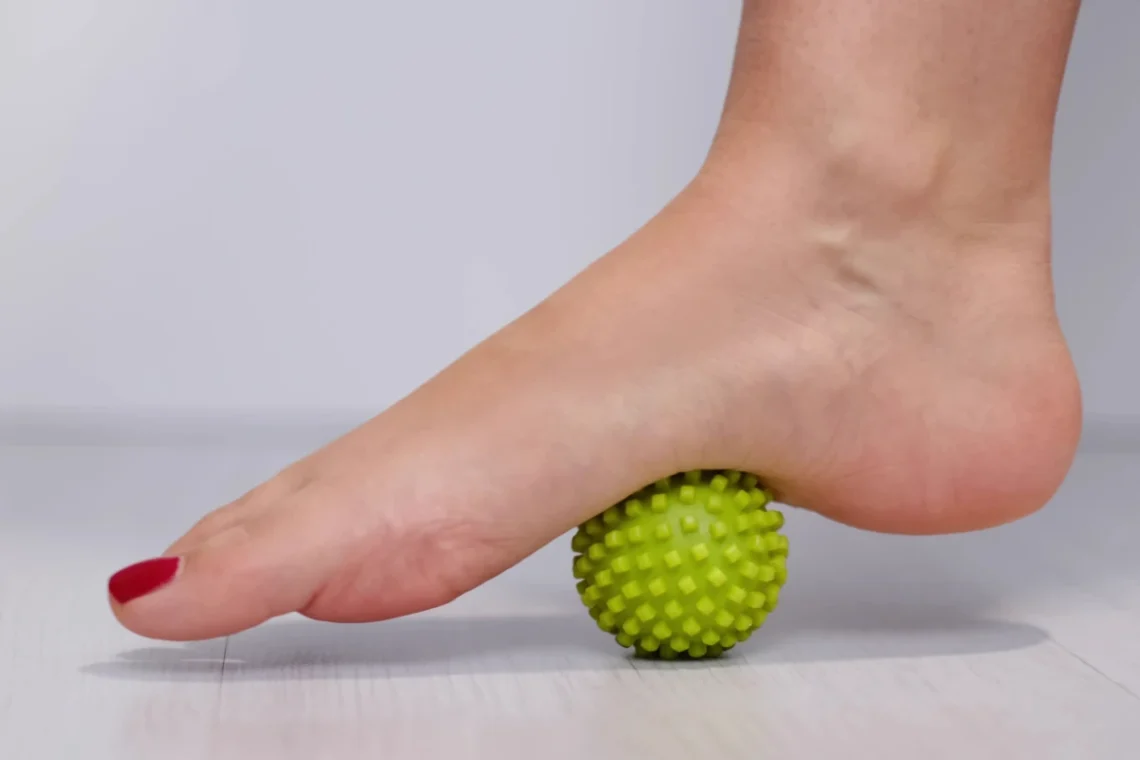
Pain in the arch of the foot is a very common complaint seen by podiatrists. One of the most common causes is plantar fasciitis. This blog will discuss many other potential causes of arch pain that you may not have heard of. If you are having arch pain and are frustrated with what you have tried or what your doctor has tried and this problem persists, this blog is for you. We will go into more detail as to other causes that may lead to arch pain. It is important to get to the root cause for your arch pain to resolve.
The Basics of Arch Pain in Foot
Let’s first explain what the arch on the bottom of the foot is composed of.
- Plantar Fascia. Beneath the skin is a strong connective tissue that goes from the ball of your foot to your heel, and it is called your plantar fascia. As we get older, the fascia becomes less elastic but as a young person, it has more elasticity and if we step down on the foot the fascia has the ability to elongate. This flexibility is lost over time resulting in the pulling of the fascia from where it attaches to the heel bone.
- Nerves. Deeper to the fascia are multiple nerve branches that supply muscles in the arch and also the skin. The nerves originate from your back and on the pathway to get to the bottom of your feet, the nerves pass through two nerve tunnels. One nerve tunnel is called the soleal sling in the upper calf and another nerve tunnel in the inside of the foot, in the ankle region is called the tarsal tunnel.
- Musculoskeletal. The musculoskeletal aspect of your foot refers to the muscles, the tendons, the bones, and joints. These could also be the cause of arch pain.
Why am I getting arch pain?
There are multiple things that you could have done that lead to pain in the arch. These include the following:
- Shoes that have been overused and are breaking down. Wearing shoes that do not provide adequate support can cause multiple problems in your feet. This may occur because the shoes do not provide adequate support or have broken down.
- Overtraining. Maybe you are starting to do more rigorous activities such as running, walking for more days a week, or hiking. It is important to have rest days between the days you are stressing your body or do alternative activities on those days so that you are not overstressing your feet. When you start to feel pain, using ice packs to apply ice and taking anti-inflammatories may be helpful to relieve pain and reduce swelling if you are overtraining. Icing can be done for up to 20 minutes at a time.
- Foot type. Some feet structurally are more susceptible to arch pain, and this can include flat feet but also a very high arch foot. Both may lead to arch pain.
Specific Causes and Treatments for Arch Pain in Foot
Plantar Fasciitis
Plantar fasciitis may be the most common cause of arch pain, and it is the most common terminology used by the public and healthcare professionals. However, because of this, the diagnosis may be overused and especially if you are not seeing a foot specialist and not getting better, you should start to question the diagnosis, and you may want to consider getting a second opinion.
Where is Plantar Fasciitis located?
With very few exceptions, plantar fasciitis is closely located where it is inserted in the heel. People present with pain in the bottom of the heel when they first get up in the morning and bear weight. As the arch flattens, the plantar fascia is pulled, and it is believed that microscopic tears can be created at the juncture where the fascia attaches to the heel bone. It may also occur in the middle of the foot, but it is much less. This is important to note because if the pain is in the middle of the foot, other problems may be the cause.
Treatment for Plantar Fasciitis
Treatment can involve more supportive shoes, or a podiatrist may recommend custom-made supports called orthotics. Other treatments such as regenerative medicine where human cellular tissue products are used to repair the damaged fascia at its connection of the heel bone can be utilized. Some patients have also found that icing, resting, and using over-the-counter inserts may be helpful. Finally, physical therapy using stretching and strengthening exercises may also be useful. After all conservative measures have failed, endoscopic heel surgery may be performed to release a portion of the fascia so that it can elongate and therefore reduce its pulling from the heel.
Nerve Conditions
Tarsal Tunnel Syndrome
The tarsal tunnel is an area where all the nerves on the bottom of the foot need to pass through to supply the bottom of the foot. It is located on the inner side of the foot below the ankle bone. Much like carpal tunnel syndrome in the hand, if this tunnel is tight, you may get symptoms of burning, tingling, and numbness in a portion of the arch, or in the entire bottom of the foot. Treatments for tarsal tunnel syndrome may include custom-made arch supports, cortisone injections may be used to help diagnose but seldom reverse the symptoms, laser treatments may also be effective. If symptoms are unresolved and severe, surgical decompressing (opening) of the nerve tunnels in that area may be needed to be performed much like doing carpal tunnel in the hands.
Soleal Sling Entrapment
Another nerve condition can create symptoms in the arch from a nerve tunnel located in the upper calf area. The main nerve that supplies the bottom of the foot is called the tibial nerve and it is a branch of the sciatic nerve. It passes through a tunnel that is located where the soleus muscle originates in the upper calf. The soleus muscle which inserts in the Achilles tendon originates in this area and where its origination is a fibrous band that can entrap (compress) the nerve. This band is referred to as the soleal sling. The symptoms from this can create burning, tingling, and numbness of the foot and the arch, and it occurs more with activity and dissipates with less activity. It is also found to cause significant cramping in the arch. Very few health professionals are adequately trained to evaluate and treat this problem, and many are unaware of its existence as a possible cause of arch pain. Treatments for soleal sling entrapment would include laser treatment, electrical stimulation treatments, cortisone injections which may help temporarily, and if symptoms are severe and chronic, surgical decompression (opening) of the tunnels may be needed.
Musculoskeletal
- Stress Fractures – For some, a stress fracture in the bones of the arch of the foot or the long bones in the foot called the metatarsals can lead to arch pain. Although rare, there are situations where a stress fracture in the arch of the foot can cause cramping of the muscles thus causing pain in the arch. The cramping is present because the body is trying to splint or immobilize the bone because of the fracture. This is nature’s way of attempting to reduce stress on the bone and thus help the bone to heal.
- Tendons – There are areas in the arch where important tendons attach to the foot. If these tendons become overused there can be mild tears where they connect to the bone. For treatment, it is important to properly diagnose with an ultrasound evaluation or an MRI. In many cases, custom-made arch supports can eliminate the pain and in other situations, regenerative medicine can be used to repair the damage to the tendon or surgery may be necessary.
- Arthritis – There are multiple joints in the mid arch of your foot that are formed by the tarsal bones and the articulation of the tarsal bones with the metatarsals. As we get older, these joints may become arthritic and the body’s response to arthritis is splinting of the muscles in the arch to immobilize the joints, and this can help reduce the pain. Pain may also be noted on the top of the foot but also on the bottom of the foot in the arch. Treatment for this is more supportive shoes, custom-made arch supports, surgery to fuse the joints, and also regenerative medicine can help reduce joint pain.
Severe Flat Feet
Finally, it must be mentioned that there are situations where a foot may be severely flat and most conservative measures may fail and because of this, a podiatrist may need to consider the option of surgery. With a severe flat foot, there could be severe stress or strains on tendons, nerves, and joints where surgical correction would be the preferred treatment plan.
If you are having arch pain that is getting unresolved, make sure to consider many of the other possibilities besides plantar fasciitis. Plantar fasciitis is a big buzzword in healthcare, and it is important that you are armed with this information so that you can get the best treatment possible for your arch pain if you are not responding to the present treatment plan you are going through. And finally, you may want to consider consulting with a board-certified peripheral nerve surgeon as seeing this type of specialist would be best if you are suspicious of nerve involvement as mentioned in this blog. In summary, please consider visiting The Association of Extremity Nerve Surgeons to find peripheral nerve surgeons in your area.
Book your appointment online or call our Fort Collins and Broomfield, Colorado foot and ankle specialists at the clinic nearest you.
Frequently Asked Questions About Foot Arch Pain
1) What are the most common causes of foot arch pain?
Common causes include plantar fasciitis, nerve conditions like tarsal tunnel syndrome, poor footwear, overtraining, and certain foot types like flat feet or high arches.
2) How do I know if my foot arch pain is due to plantar fasciitis or something else?
Plantar fasciitis usually causes heel pain when first standing in the morning, while persistent arch pain, burning, or numbness may suggest a nerve issue like tarsal tunnel syndrome.
3) Can wearing the wrong shoes lead to foot arch pain?
Yes — worn-out or unsupportive shoes can cause or worsen arch pain by failing to provide the necessary support for your foot’s natural structure.
4) When should I consider seeing a specialist for foot arch pain?
If your arch pain persists despite rest, better footwear, and home treatments, or if you’re unsure of the diagnosis, it’s wise to see a podiatrist for a thorough evaluation.
5) What treatment options are available for chronic foot arch pain?
Treatments range from orthotics, physical therapy, and regenerative medicine to nerve decompression surgery, depending on the underlying cause.
Schedule an Appointment
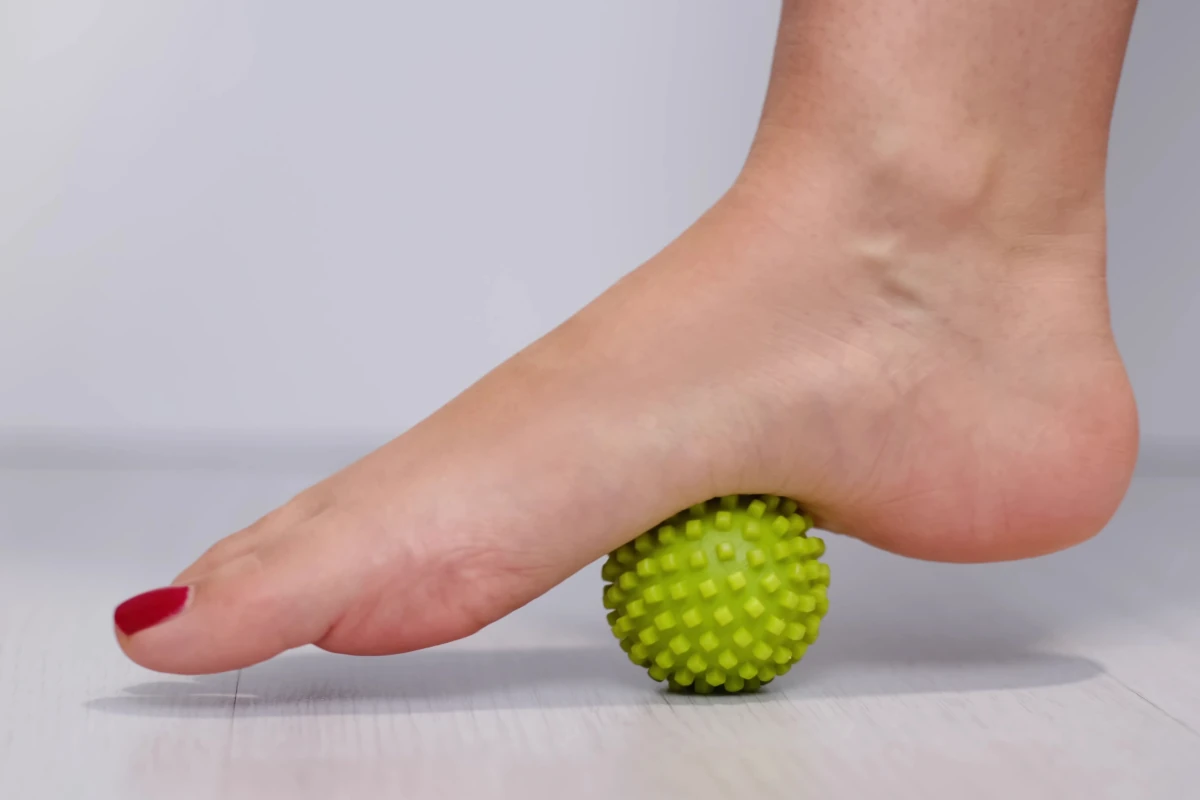



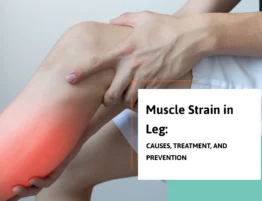
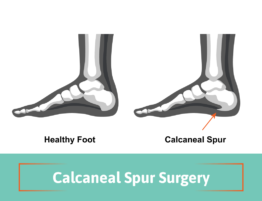

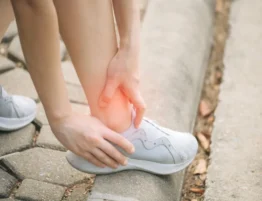

Write a comment: